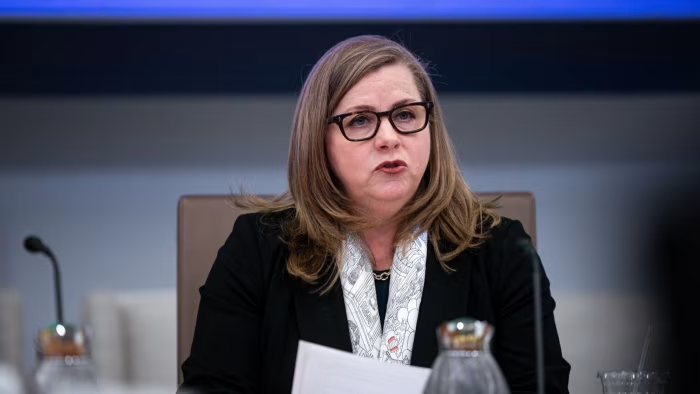Unlock the White House Watch newsletter for free
Your guide to what Trump’s second term means for Washington, business and the world
The Federal Reserve’s top banking supervisor plans to shrink the Washington-based board’s staff by 30 per cent, amid a push by the Trump administration to deregulate the financial sector.
Michelle Bowman, the Fed’s vice-chair for supervision, on Thursday unveiled a proposal to lower the headcount of the central bank’s supervision and regulation department from 500 to roughly 350 employees by the end of 2026.
An email sent to staff, seen by the Financial Times, said the central bank would try to lower headcount “as much as possible through natural attrition, retirements, and by offering a voluntary separation incentive to all S&R division employees, with details to come in the following weeks”.
The email also highlighted Bowman’s plans to reshape the unit “to operate with a flatter organizational structure and fewer management layers”.
The lay-offs will only affect staff based at the Fed board, and not the 12 regional Feds, where most of the central bank’s supervisors work.
The changes come as the Trump administration pushes the Fed and other US financial regulators to ease rules affecting American lenders.
Elizabeth Warren, the most senior Democrat on the powerful Senate Banking Committee, which oversees the Fed, accused the central bank of “recycling” a regime that contributed to the 2008 global financial crisis.
“The agency is now gutting its supervision and regulation staff, while granting big banks their deregulatory wish list. The Fed is actively undermining American financial stability at a moment when Donald Trump is taking a wrecking ball to our economy,” Warren said.
“We all know what happened the last time we let Wall Street run rampant, and I’m deeply concerned American families will pay the price once again.”
Bowman is one of five candidates on Treasury secretary Scott Bessent’s shortlist to become Fed chair when Jay Powell’s second term at the helm of the central bank ends in May 2026. US President Trump has said he plans to announce his replacement for Powell by the end of this year.
The regulatory changes the Fed is considering could enable banks to lower their capital ratios enough to offer US borrowers an additional $2.6tn in lending capacity, according to consultancy Alvarez & Marsal.
Bessent has also criticised the Dodd-Frank legislation, which was introduced after the global financial crisis of 2008 and expanded the Fed’s supervision and regulation responsibilities, for giving the central bank too much control over US lenders.
“The core problem is structural: the Fed now regulates, lends to and sets the profitability calculus for the very banks it oversees,” Bessent said in an International Economy magazine article in September. “This is an unavoidable conflict that blurs accountability and jeopardizes monetary policy independence.”







